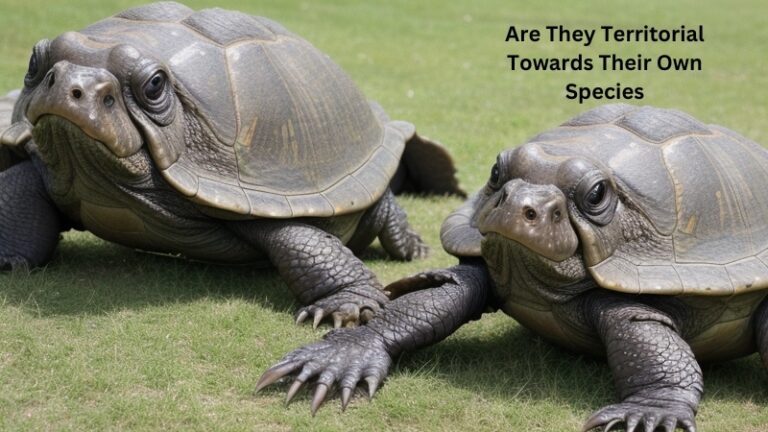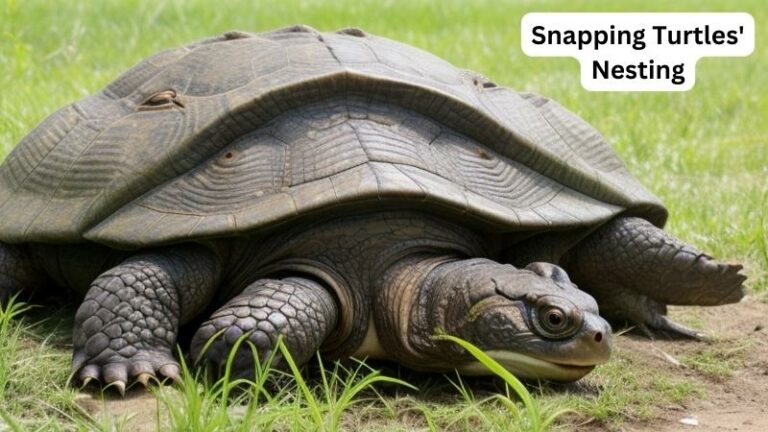Unveiling Snapping Turtles’ Interaction With Habitat Plants
How do snapping turtles interact with plants and vegetation in their habitat? Snapping turtles, with their powerful jaws and sharp beaks, have a unique way of navigating their surroundings. These intriguing creatures not only rely on their impressive hunting skills but also play a crucial role in shaping the ecosystems they inhabit. By foraging on various types of vegetation, snapping turtles become key players in maintaining the delicate balance of plant life in their habitat. In this article, we delve into the fascinating world of snapping turtles and explore the intricate relationship they have with the plants and vegetation around them.
How do Snapping Turtles Interact with Plants and Vegetation in Their Habitat?
Snapping turtles, known for their powerful jaws and prehistoric appearance, are fascinating creatures that play a vital role in their ecosystem. As semi-aquatic reptiles, they can be found in various habitats, including ponds, lakes, rivers, and wetlands. In these diverse environments, snapping turtles interact with plants and vegetation in interesting ways. This article will explore the different aspects of their interaction, highlighting their feeding habits, nesting preferences, and overall impact on the plant community.
Feeding Habits
Snapping turtles have diverse diets, consisting of both animal matter and plant material. While they are primarily carnivorous, opportunistic feeders, they also consume various types of aquatic vegetation. Their ability to eat both plant and animal matter makes them essential in maintaining a balanced ecosystem.
1. Aquatic Plants: Snapping turtles feed on a variety of aquatic plants such as water lilies, duckweeds, water hyacinths, and submerged vegetation. They often browse on these plants while submerged, using their strong jaws to tear off plant parts.
2. Emergent Plants: In addition to aquatic plants, snapping turtles also feed on emergent plants found along the water’s edge, such as cattails and reeds. They may consume the leaves, stems, or even the seeds of these plants, depending on their availability.
3. Role in Ecosystem: By consuming both aquatic and emergent plants, snapping turtles help control the growth and spread of vegetation within their habitat. This grazing behavior prevents excessive overgrowth and promotes the health of the plant community.
Nesting Preferences
Snapping turtles have specific nesting preferences when it comes to selecting vegetation-rich areas for egg deposition. These nests play a crucial role in the survival of the species and contribute to the dispersal of plant seeds throughout their habitat.
1. Nest Site Selection: Female snapping turtles seek out areas with loose, sandy soil near the edge of bodies of water. These nesting sites are often surrounded by dense vegetation, providing protection and camouflage for the nests.
2. Vegetation Cover: The presence of vegetation around the nest serves multiple purposes. It provides shade, maintaining a suitable temperature for the developing eggs, and acts as a barrier against predators. Additionally, the decomposing plant material contributes to the nutrient content of the nest.
3. Seed Dispersal: As snapping turtles move through their habitat, they inadvertently aid in the dispersal of seeds from the plants they encounter. Seeds can become attached to their bodies or get transported within their digestive system, facilitating plant reproduction and diversity.
Impact on the Plant Community
The interaction between snapping turtles and plants extends beyond their feeding habits and nesting preferences. Their presence in the ecosystem influences the overall dynamics of the plant community, contributing to its diversity and stability.
1. Grazing Effects: Snapping turtles’ grazing behavior helps maintain a balanced plant population. By consuming excessive plant material, they prevent certain species from dominating and promote the growth of other plants, leading to a diverse plant community.
2. Nutrient Cycling: Snapping turtles play a role in nutrient cycling within their habitat. As they consume plants, the nutrients contained in the vegetation are broken down and eventually released back into the ecosystem through their waste. This process enriches the soil and benefits surrounding plants.
3. Seed Dispersal: As mentioned earlier, snapping turtles unintentionally disperse seeds as they move across their habitat. This seed dispersal helps plants colonize new areas, contributing to the ecological succession and maintaining genetic diversity within the plant community.
4. Habitat Modification: Snapping turtles can indirectly modify their habitat by creating open areas through their nesting activities. These areas may provide opportunities for different plant species to establish, leading to changes in the plant composition over time.
In conclusion, snapping turtles play a significant role in shaping plant and vegetation dynamics within their habitats. Their feeding habits and nesting preferences contribute to the overall health and diversity of the plant community, while their unintentional seed dispersal aids in plant reproduction and colonization. Understanding the intricate interactions between snapping turtles and plants helps us appreciate the importance of these unique reptiles in maintaining the delicate balance of aquatic ecosystems.
Frequently Asked Questions
How do snapping turtles interact with plants and vegetation in their habitat?
Snapping turtles play an important role in their habitat’s ecosystem by interacting with plants and vegetation in various ways:
What kind of plants do snapping turtles eat?
Snapping turtles are omnivorous and have a varied diet that includes both plants and animals. They commonly consume aquatic vegetation such as water lilies, duckweed, algae, and submerged aquatic plants.
Do snapping turtles damage plants in their habitat?
While snapping turtles may uproot or disturb plants in their search for food or nesting sites, their presence can also have some positive effects. By feeding on excessive aquatic vegetation, they help maintain a balanced ecosystem, preventing overgrowth and improving water quality.
How do snapping turtles contribute to the dispersal of plant seeds?
Snapping turtles assist in seed dispersal by consuming fruits and then defecating in different locations. This process aids in the transport of seeds from one area to another, thereby facilitating plant colonization and genetic diversity.
Do snapping turtles provide any benefits to aquatic plants?
Yes, snapping turtles indirectly benefit aquatic plants by controlling populations of herbivorous invertebrates that may feed on these plants. By preying on animals that consume aquatic vegetation, snapping turtles help maintain a healthy balance and ensure the survival of these plants.
Can snapping turtles damage crops or gardens?
Snapping turtles are primarily found in natural habitats such as wetlands, rivers, and ponds. While they may occasionally venture into adjacent areas, they are not typically a significant threat to crops or gardens. However, protective measures can be taken if necessary, such as fencing or deterrents.
How do snapping turtles interact with floating plants?
Snapping turtles often use floating plants like water lilies or duckweed for basking and resting purposes. They may also feed on small animals that seek shelter or attach themselves to these floating plants. Overall, floating plants contribute to the overall habitat complexity and provide resources for snapping turtles.
Final Thoughts
Snapping turtles play a significant role in shaping the vegetation and plant life within their habitat. By foraging on aquatic plants, they help control their growth, preventing overgrowth and enhancing the overall balance of the ecosystem. Additionally, snapping turtles aid in seed dispersal as they venture through wetlands, carrying seeds from one location to another. Their interactions with plants and vegetation are crucial for maintaining biodiversity and promoting the health of their habitat. Understanding the dynamics between snapping turtles and plants is fundamental for conserving these unique ecosystems for future generations.

